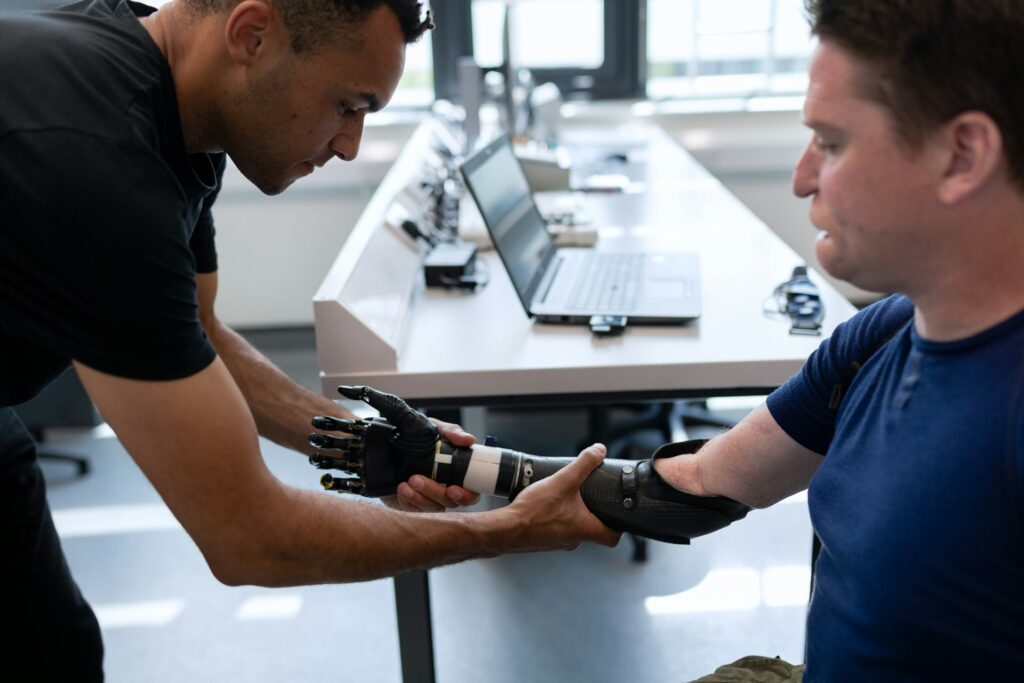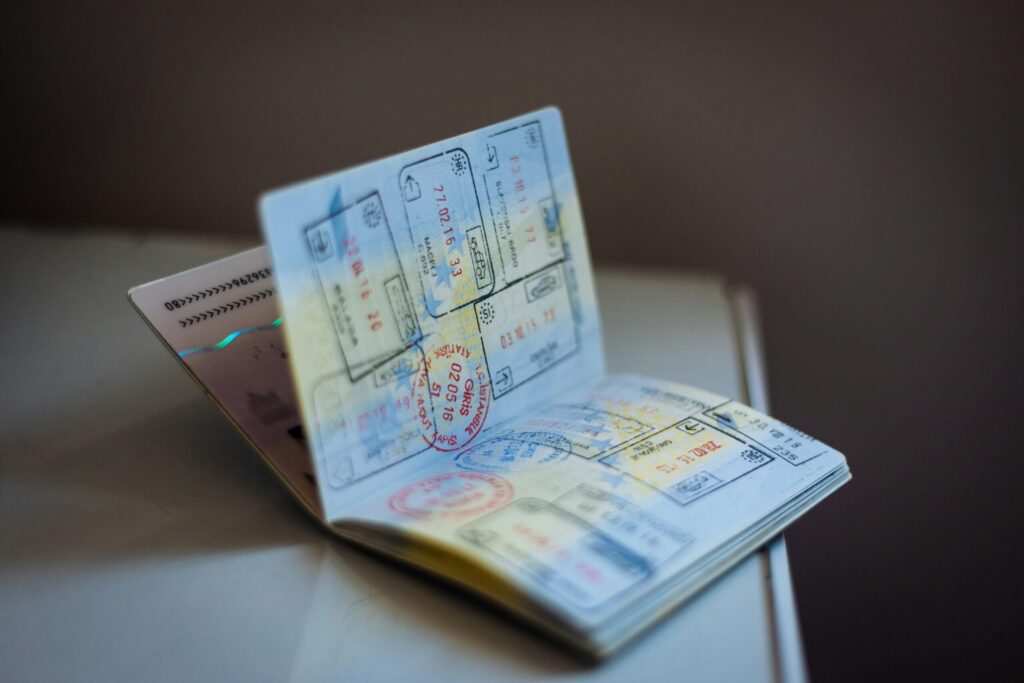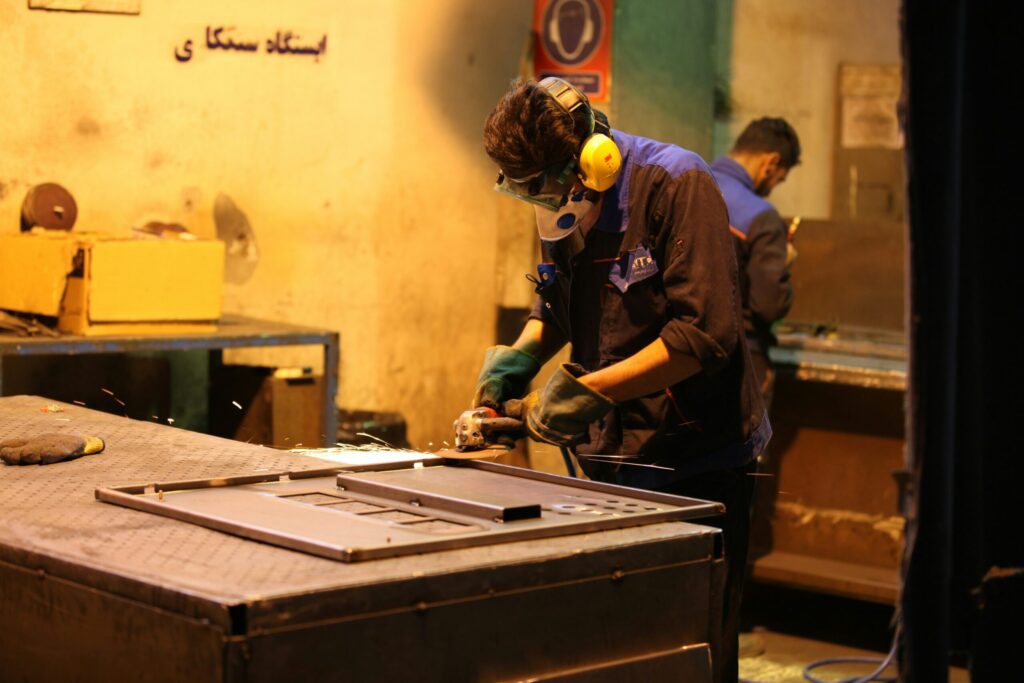 Physical therapy assistant jobs in the USA provide a fulfilling career path for people who like assisting others in regaining their strength, mobility, and self-assurance following an illness or injury.
Physical therapy assistant jobs in the USA provide a fulfilling career path for people who like assisting others in regaining their strength, mobility, and self-assurance following an illness or injury.
Under the guidance of certified physical therapists, PTAs work directly with patients, assisting them with exercises, monitoring their progress, and offering crucial support while they heal. Physical therapy assistants are in greater demand in hospitals, clinics, assisted living facilities, and outpatient clinics due to the increased emphasis on wellness, rehabilitation, and aging populations. This position is particularly tempting because it combines competitive salary, good job security, and meaningful, people-focused work often without requiring a four-year degree.
Read Also: Remote Nursing Jobs in the USA
What Does a Physical Therapist Do?
 Physical therapist assistants aid physical therapists in treating patients of various ages, from infants to those nearing the end of their lives. A large number of patients require care for injuries, impairments, or other illnesses. A physical therapist will assess the patient and create a plan of care to help them move more freely. Treatment controls or lessens discomfort, regains function, and avoids impairment. To carry out the treatment plan, gather information, and give the physical therapist feedback, the assistant will collaborate with the patient. The lives of people can be significantly impacted by physical therapist assistants. They support individuals in leading active lives, achieving movement goals, and regaining or maintaining their independence.
Physical therapist assistants aid physical therapists in treating patients of various ages, from infants to those nearing the end of their lives. A large number of patients require care for injuries, impairments, or other illnesses. A physical therapist will assess the patient and create a plan of care to help them move more freely. Treatment controls or lessens discomfort, regains function, and avoids impairment. To carry out the treatment plan, gather information, and give the physical therapist feedback, the assistant will collaborate with the patient. The lives of people can be significantly impacted by physical therapist assistants. They support individuals in leading active lives, achieving movement goals, and regaining or maintaining their independence.
About 72% of physical therapist assistants are employed by hospitals or privately run outpatient physical therapy clinics. Others work in long-term care or skilled nursing facilities, schools, and home health.
Read Also: Hospitality Jobs in the USA (Hiring Immediately)
What is the role of a physical therapy assistant?
Depending on the clinic, the kind of injury or medical issue, and the physical therapist they collaborate with a PTA’s specific responsibilities will change. Nevertheless, a physical therapy assistant may typically carry out the following tasks:
- Cleaning workspaces.
- Setting up the therapeutic apparatus.
- Monitoring patients and their development.
- Helping patients with their exercises.
- Engaging in direct therapy with patients.
- Using therapeutic methods to treat patients.
- Instruction in the usage of equipment for patients.
- Teaching patients and their family members.
- Creating medical reports.
- Giving advice and instruction on preventative measures.
- Engaging with the community.
Read Also: High Demand Jobs in the USA 2025 for Foreigners
Top 10 Physical Therapy Jobs
Although there are numerous alternatives for specializations within physical therapy, the majority of students who obtain a degree in physical therapy go on to become physical therapists. Pay may be comparable, but patient demographics or therapy types may differ significantly between jobs.
-
Physiologist for exercise
Exercise and other physical examinations are used by exercise physiologists to assess their patients’ health. After that, they design a customized workout program to assist patients in reaching their fitness and health objectives. Physical therapists and exercise physiologists share many of the same requirements for education and training. To develop exercise regimens for their patients, many collaborate with physical therapists. $48,495 a year is the average salary nationwide.
-
Rehabilitative vestibular therapist
The primary goal of vestibular rehabilitation therapists is to assist patients with vestibular disorders. These conditions, which include otosclerosis, vertigo, inner-ear problems, dizziness, and concussions, usually impair a patient’s ability to balance. To help their patients regain their balance, vestibular rehabilitation therapists employ physical activity such as exercise. The average pay nationwide is $61,727 annually.
-
A recreation therapist
Recreational therapists employ recreational activities to assist patients in enhancing their overall health and well-being. Recreational therapists assist people in overcoming barriers to their mental and social health in addition to their physical health. They accomplish this by engaging in leisure pursuits like games, sports, crafts, dance, and music. $75,691 annually is The average pay nationwide.
-
Physical Therapy Consultant
Physical therapy consultants assist businesses that require the opinions and suggestions of seasoned physical therapists. To build and program health-related software, apps, and machines, they may offer their expertise in anatomy, biomechanics, and patient demands. When it comes to designing prosthetics and creating therapies for adjusting to these technologies, physical therapist consultants can also be beneficial. The average pay nationwide is $50,437 annually.
-
Senior Physical Therapist
Helping elderly people attain or preserve a high degree of physical health is the main focus of geriatric physical therapy. Physical therapists can assist elders in regaining their mobility, improve their balance, and maintain their physical fitness. By giving alternate movements and pain relief, they can aid in the treatment of long-term ailments like cancer, osteoporosis, arthritis, and Alzheimer’s disease. They can also aid in the strength and recuperation of elderly patients following surgery. The national average wage is $90,029 annually.
-
Orthopaedic Physical Therapist
Physical therapists who specialize in orthopedics focus on the musculoskeletal systems of their patients. They treat ailments affecting the muscles, bones, joints, ligaments, and tendons that make up the orthopaedic system. Among the conditions are muscular dystrophy, bursitis, and lower back pain. Exercises and manipulation are typically part of their therapy regimen to reduce pain, promote healing, and enhance patients’ functionality. The average annual wage nationwide is $90,029.
-
A Paediatric Physical Therapist
Pediatric physical therapists assist kids under the age of eighteen in increasing their range of motion and physical fitness. Age-appropriate gaming activities can be used to encourage kids to engage in physical activity and other activities that can aid in their recovery from illnesses and accidents. Young children with developmental difficulties can also benefit from their assistance in learning how to improve their motor skills. The national average wage is $90,029 annually.
-
Physical therapists with a neurological background
Patients with illnesses or accidents affecting the brain, spinal cord, or nervous system are assisted in their recovery by neurological physical therapists. A patient’s mobility and control over their motor functions may be impacted by illnesses and injuries in these areas. The goal of neurological physical therapy is to assist patients in relearning how to manage their movement through exercise. The average pay nationwide is $90,029 annually.
-
Physical therapist for cardiopulmonary conditions
The goal of cardiopulmonary physical therapy is to help patients’ hearts and lungs, which are part of their cardiopulmonary systems. Asthma, emphysema, pulmonary fibrosis, and lung transplants are among the cardiopulmonary disorders that they treat and improve with physical therapy. Exercises that enhance breathing, support heart health, and increase blood flow are part of many treatments for these conditions. The average pay nationwide is $90,029 annually.
-
An occupational therapist
Occupational therapists specialize in using daily activities to help patients increase their motor skills and mobility. Like physical therapists, they treat a lot of the same patients and ailments. However, instead of addressing each patient’s unique problems, they collaborate with them to set goals. After that, they create a physical activity program that will enable the patient to reach their objective. $92,575 annually is the average wage nationwide.
What is the Job Outlook for a Physical Therapy Assistant?
Physical therapist assistant and aide employment is expected to increase by 19 percent overall between 2023 and 2033, which is significantly faster than the average for all occupations. They have a very good career outlook. It is anticipated that between 2023 and 2033, the number of positions available for physical therapist assistants and aides will increase by 19%, reaching about 27,500 positions annually.
Over ten years, an average of 27,500 positions per year are anticipated to become available for physical therapist assistants and aides. It is anticipated that many of those positions will arise from the need to replace employees who change careers or leave the workforce for other reasons, such as retirement.
Education and Licensure for Physical Therapist Assistants
 To become a physical therapist assistant in the United States, you must complete an education program accredited by the Commission on Accreditation in Physical Therapy Education. In the majority of states, PTA programs last for two years on average, which is equivalent to five semesters. Anatomy, physiology, exercise physiology, biomechanics, kinesiology, neuroscience, clinical pathology, behavioral sciences, communication, ethics/values, and more are the following of the possible primary curriculum content areas. Classroom and lab studies make up around 75% of the PTA curriculum, with clinical education accounting for the remaining 25%. PTA students participate in full-time clinical education experiences for an average of 16 weeks.
To become a physical therapist assistant in the United States, you must complete an education program accredited by the Commission on Accreditation in Physical Therapy Education. In the majority of states, PTA programs last for two years on average, which is equivalent to five semesters. Anatomy, physiology, exercise physiology, biomechanics, kinesiology, neuroscience, clinical pathology, behavioral sciences, communication, ethics/values, and more are the following of the possible primary curriculum content areas. Classroom and lab studies make up around 75% of the PTA curriculum, with clinical education accounting for the remaining 25%. PTA students participate in full-time clinical education experiences for an average of 16 weeks.
How to Become a Physical Therapy Assistant
You need to get the required degree, get a license, and develop the right abilities through training and job experience to become a PTA. Here’s a detailed how-to to get you started.
-
Participate in physical therapy assistant programs to earn your degree
You must hold a bachelor’s degree in kinesiology, exercise science, or a similar discipline, or an associate degree from an approved PTA program. This enables you to be eligible to take the licensing exam to become a PTA. Most PTA programs last two years and include lab work, clinical observation, and practical clinical practice in addition to study. However, a bachelor’s degree programs often take four years to complete. You will probably earn certifications in basic life support (BLS) and cardiopulmonary resuscitation (CPR) during your official PTA training. These skills are necessary to serve as a PTA.
-
Pass the test to obtain a license.
The Federation of State Boards of Physical Therapy administers the National Physical Therapy Examination (NPTE), which you are prepared to take after completing your program. Except for Colorado and Hawaii, this is a nationwide prerequisite for becoming a licensed PTA in every state. Passing this test will make you a licensed physical therapy assistant. However, be aware that each state will have different requirements. A copy of your PTA program transcripts, evidence of liability insurance, a jurisprudence evaluation, a criminal background check, or state-specific tests are a few examples of requirements. Every two years, most states also mandate license renewals.
-
Obtain relevant work experience.
Reach out to PT clinics or other organizations that employ PTAs after graduating and passing the NPTE to obtain appropriate work experience. Also, finding a job as a physical therapist assistant and improving your PTA skills requires you to take this crucial step. Take your interests in rehabilitation work into account when selecting a clinic or organization. For instance, you may determine that you want to concentrate on surgery rehabilitation or sports-related injuries. Additionally, look for a company that offers work in a setting that works best for you and find a focus.
-
Improve your abilities.
To ensure they perform to the best of their abilities, PTAs need to have a combination of technical and human skills. If you want to work in the field, you should think about developing the following skills:
Communication
One of a physical therapist assistant’s most crucial and frequently undervalued tools is effective communication. Technical expertise and practical skills are important. However, the quality of care you deliver is directly impacted by your capacity to communicate with patients, therapists, and the care team clearly and kindly. People from all walks of life will be a part of your PTA work. Meanwhile, some will be recuperating from injuries, while others will be coping with chronic pain or mobility challenges. The ability to listen, respond empathetically, and explain exercises in plain language all contribute to the development of trust and motivate patients to continue receiving treatment. Effective communication is essential for PTA members. This is because their primary responsibility is to interact directly with patients and their physical therapists.
Active listening
One of the most effective soft skills a Physical Therapist Assistant (PTA) can acquire is active listening, which is crucial for enhancing patient care and career advancement. Active listening in a clinical context entails focusing entirely on the patient, observing both their words and their delivery, and reacting with compassion and understanding. Your PTA patients can be coping with discomfort, annoyance, or doubt. You may provide an environment where they feel heard, appreciated, and supported by paying attention without interjecting or hurrying. Because patients are more likely to follow through when they feel understood, this promotes open communication, helps to establish trust, and may even result in better outcomes. PTAs need to be just as skilled at actively listening to patients, giving feedback on their feelings, and giving thorough directions.
Equipment expertise
Strong equipment knowledge is a useful ability that can make you stand out as a Physical Therapist Assistant (PTA). Resistance bands, balancing boards, electrical stimulation devices, treadmills, and other equipment are just a few of the tools and machinery used in today’s therapeutic settings. These tools and machines are all intended to assist patients in gaining more strength, movement, and function. Gaining competence and confidence with this equipment will help you conduct therapy sessions more successfully while also ensuring patient safety.
You will have the ability to correctly set up and run machines. Also, you will modify settings according to the needs of patients, and effectively describe how each piece of equipment aids in their recuperation. When dealing with patients, a PTA will utilize a wide range of equipment. You will work with therapeutic tools like electric stimulation and ultrasound, as well as exercise equipment like medicine balls and support bands. Therefore, it is critical to comprehend how each instrument should be used.
Human anatomy and physiology
As a Physical Therapist Assistant (PTA), one of the most crucial prerequisites for success is a strong grasp of human anatomy and physiology. Knowing body systems or parts is not enough. Furthermore, you need to have a thorough understanding of how the body moves, works, and heals to provide accurate and confident care for each patient. Understanding how muscles, bones, joints, and nerves interact will help you better follow a therapist’s treatment plan and provide patients with precise instructions on exercises. For instance, knowing the rotator cuff muscles allows you to safely lead someone healing from a shoulder injury through specific activities without putting them under further stress. To give their patients the best care possible, PTAs need to have a solid understanding of these topics.
Physical Therapy Assistant Jobs Salary
The pay for physical therapist assistants is marginally above average. Also, their employment prospects are excellent for the foreseeable future. The typical yearly wage for physical therapist assistants is $60,050, per the US Bureau of Labor Statistics (BLS). The average yearly salary for the top 10 percent of earners was $87,630. Meanwhile, the average salary for the bottom 10 percent was $46,020. You can increase your salary as a physical therapist assistant by taking the following precise actions:
-
Concentrate on enhancing your performance at work
Once you have a PTA position, concentrate on putting in a lot of work. Also, go above and above for your managers. They might give you a raise or promotion if they find that you can handle tasks outside of the normal PTA responsibilities.
-
Obtain your certification.
One of the most reliable methods to raise your PTA salary is to become certified. Since the American Therapy Association is a nationally recognized organization, PTAs with one of their credentials are generally seen as better qualified than those without.
-
Return to school.
Getting a higher degree is another way to boost your income. Additionally, you might become a doctor of physical therapy or seek a bachelor’s degree in pre-medical studies. Furthermore, increasing your educational attainment will enhance your abilities and increase your employability.
Conclusion
Jobs as a physical therapy assistant in the USA provide a special fusion of practical medical treatment, interpersonal relationships, and significant influence. Helping people regain their strength, mobility, and confidence is a major responsibility of a physical therapy assistant. Also, you frequently play a significant role in their recovery process. This career path is steady and fulfilling, offering chances in a range of settings. Also, you work in hospitals, outpatient clinics, and home care, with competitive compensation and a positive job outlook. Perhaps most significantly, it enables you to positively impact people’s lives daily. Becoming a PTA is more than simply a profession for people who are kind, meticulous, and enthusiastic about assisting others with movement and rehabilitation. It is a rewarding career with a long-lasting purpose.





